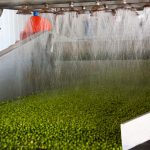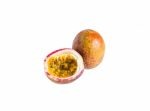The ackee (Blighia sapida) is a tropical fruit native to West Africa but is most well-known as a staple in Jamaican cuisine.
Appearance
- Shape and Size: The ackee fruit is pear-shaped and typically grows to about 4 inches (10 cm) long.
- Color: When ripe, its skin turns from green to a bright red or yellow-orange.
- Structure: The fruit splits open naturally to reveal three large, black seeds surrounded by soft, creamy-yellow arils, which are the edible part of the fruit.
Nutritional Value
- Macronutrients: Ackee is a good source of fatty acids, particularly linoleic, palmitic, and stearic acids. It also contains some protein and carbohydrates.
- Micronutrients: The fruit is rich in vitamins, such as vitamin A and vitamin C, and minerals, including potassium, calcium, and phosphorus.
Culinary Uses
- Jamaican Cuisine: Ackee is a key ingredient in the national dish of Jamaica, “ackee and saltfish,” where it is cooked with salted cod, onions, tomatoes, and spices.
- Preparation: It is crucial to ensure the fruit is fully ripe and properly prepared, as the unripe fruit and certain parts (the seeds and the pinkish membrane around the seeds) are toxic.
Toxicity
- Hypoglycin A and B: The unripe ackee contains high levels of these toxins, which can cause “Jamaican vomiting sickness,” characterized by severe vomiting and hypoglycemia (low blood sugar).
- Safety: The fruit must be harvested only when fully ripe and naturally opened on the tree. The edible arils should be thoroughly cleaned and cooked to ensure safety.
Historical and Cultural Significance
- Introduction to the Caribbean: Ackee was brought to the Caribbean from West Africa, likely on slave ships during the 18th century.
- Jamaican Identity: Over time, ackee has become an integral part of Jamaican culture and cuisine, symbolizing the nation’s heritage and culinary traditions.
Growing Conditions
- Climate: The ackee tree thrives in tropical and subtropical climates, requiring warm temperatures and adequate rainfall.
- Cultivation: It is grown primarily in Jamaica, but also in other parts of the Caribbean, Central America, and West Africa.
Health Benefits and Risks
- Benefits: When properly prepared, ackee can be part of a healthy diet, offering various nutrients and potential health benefits, such as supporting heart health due to its fatty acid content.
- Risks: Proper handling and preparation are essential to avoid the toxic effects associated with the unripe fruit.
The ackee fruit is a fascinating and culturally significant food with strict preparation requirements to ensure safety.
Visited 62 times, 1 visit(s) today



Leave a Reply